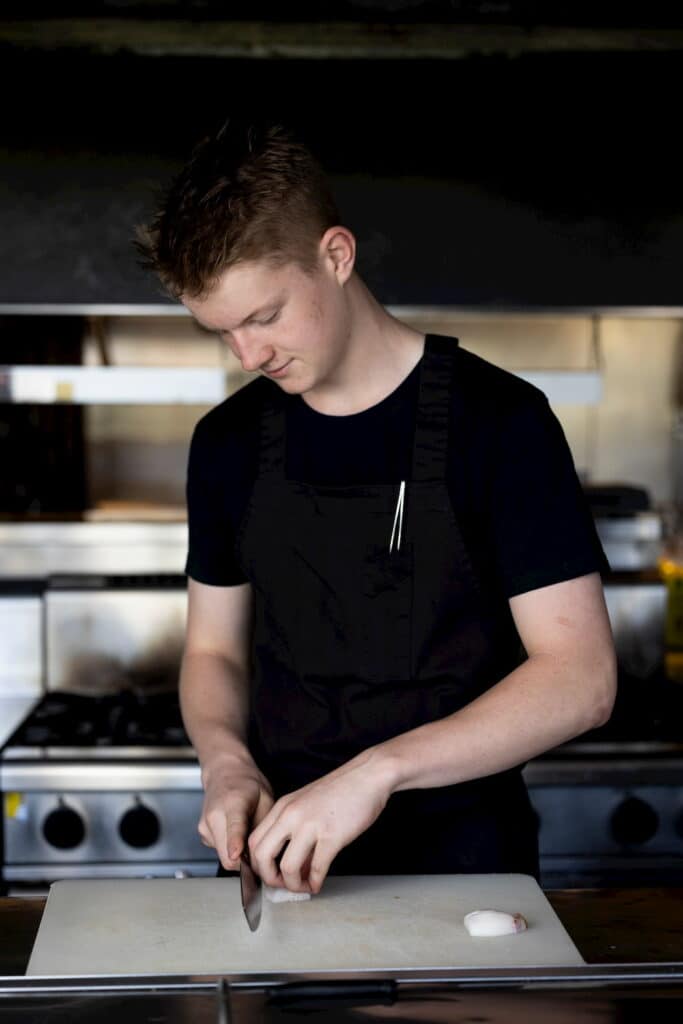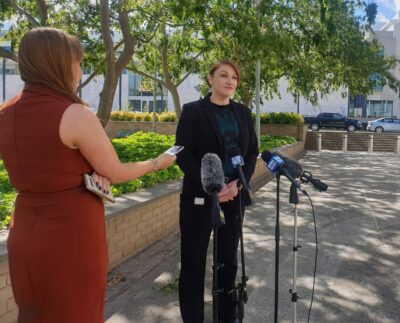In December, a 26-year-old woman was charged over a dark web murder contract, a high-profile lawyer was arrested in a major organised crime investigation and architects fail in their bid to stop the demolition of Anzac Hall at the AWM.
In brighter news, local teenager and budding chef Sebastian Connor was named Australia’s School-based Apprentice of the Year while the Great Conjunction of Jupiter and Saturn was visible on Earth for the first time in centuries.
Architects want public to tell War Memorial ‘Hands Off Anzac Hall’
The Australian Institute of Architects (AIA) launched a social media campaign in a bid to save the Australian War Memorial’s award-winning exhibition space, Anzac Hall, from demolition.
The failed bid means the Hall will be knocked down as part of a $500 million proposal to expand the exhibition space by 80% and create new Afghanistan and Iraq galleries.
Federal Environment Minister Sussan Ley has approved the demolition under the Environment Protection and Biodiversity Conservation Act 1999 (EPBC Act).
The Hall was opened in 2001 and received the Sir Zelman Cowen Award for best major public building of its year. But the Memorial’s director, Matt Anderson, told ABC Radio National in October Anzac Hall was no longer fit for purpose.

Young Ainslie chef named Australian School-based Apprentice of the Year
Walking into Pilot. Restaurant + Bar first thing in the morning, it already smells good.
At the door, Australian School-based Apprentice of the Year, Sebastian Connor, explains the inviting aromas.
“There’s stock in the oven and some pork cooking on the back shelf as well,” Connor says. “And we have black garlic – do you know how to make black garlic? In an old rice cooker, you just leave it on ‘keep warm’ for six weeks, with just the garlic. It’s quite the black garlic production back there.”
Not many Year 12 students would sign up to work late nights every Friday, Saturday and Sunday, but the former Canberra Healthy Teen Chef award winner says he skips a lot of college house parties to pursue his passion for cooking.
Canberra woman charged over dark web murder contract

A 26-year-old Canberra woman was charged with two counts of attempted murder in December.
ACT Policing (pictured) allege the woman agreed to pay $20,000 over the dark web for the murder of two people who were known to her. It is alleged the woman paid $6,000 in initial payments to a website believed to be fraudulent.
ACT Policing believe the motive was financial but would not confirm the nature of the relationship between the intended targets and the woman. It was later revealed they were her parents.
The incident was brought to the attention of ACT Policing by a UK journalist who was investigating the dark web.
The journalist contacted ACT Policing via email with details of the payment and targets.
High-profile lawyer and accountant arrested in major organised crime investigation

Following a raid on a Canberra law firm, a 54-year-old man and a 47-year-old man were arrested in December for facilitating large quantities of cash and laundering the proceeds of crime.
ACT Policing allege the two men met on a number of occasions and discussed how legal contracts and agreements could be used to support a business purchase to facilitate the laundering of proceeds of crime.
Detective Superintendent Scott Moller said the arrest was part of an eight-month investigation into organised crime in the ACT and more arrests were expected.
He did not confirm nor rule out a specific link to outlaw motorcycle gangs.
“It’s part of a broader strategy – we’ve been targeting organised crime and outlaw motorcycle gangs for two years and have halved their membership.”
Detective Superintendent Moller said this was connected to recent raids on tattoo parlours, houses, cars, an accountancy firm in Kingston, and a local grocery business in Queanbeyan.
Great Conjunction brings gas giants closest to Earth in centuries

In December, Canberra skywatchers readied their telescopes for an event that last took place in the Middle Ages: the Great Conjunction of Jupiter and Saturn.
For the last couple of weeks of December, the gas giants gradually drew closer, speedy Jupiter with its 11.9-year orbit around the Sun overtaking sluggish Saturn (a leisurely 29.5 years). The culmination occurred on Monday night, 21 December, when the gas giants will be 0.1 degrees apart (a mere 665 million or so kilometres).
Although the Great Conjunction occurs roughly every 20 years, the last time the planets came so close to the Earth was in 1623 – but nobody saw it. The last time the conjunction was observable at night was in 1226 – when Europeans still believed the sun and stars orbited the Earth.
“This isn’t something that you know will happen in a year or two,” ANU astrophysicist / cosmologist Dr Brad Tucker said. “It really is waiting decades or centuries to see this. When we talk about planets moving around our solar system, very rarely do we get to see it with our own eyes. We’re seeing our solar system in action.”
For more of 2020 in review:
January 2020 | February 2020 | March 2020 | April 2020 | May 2020 | June 2020 | July 2020 | August 2020 | September 2020 | October 2020 | November 2020 |








